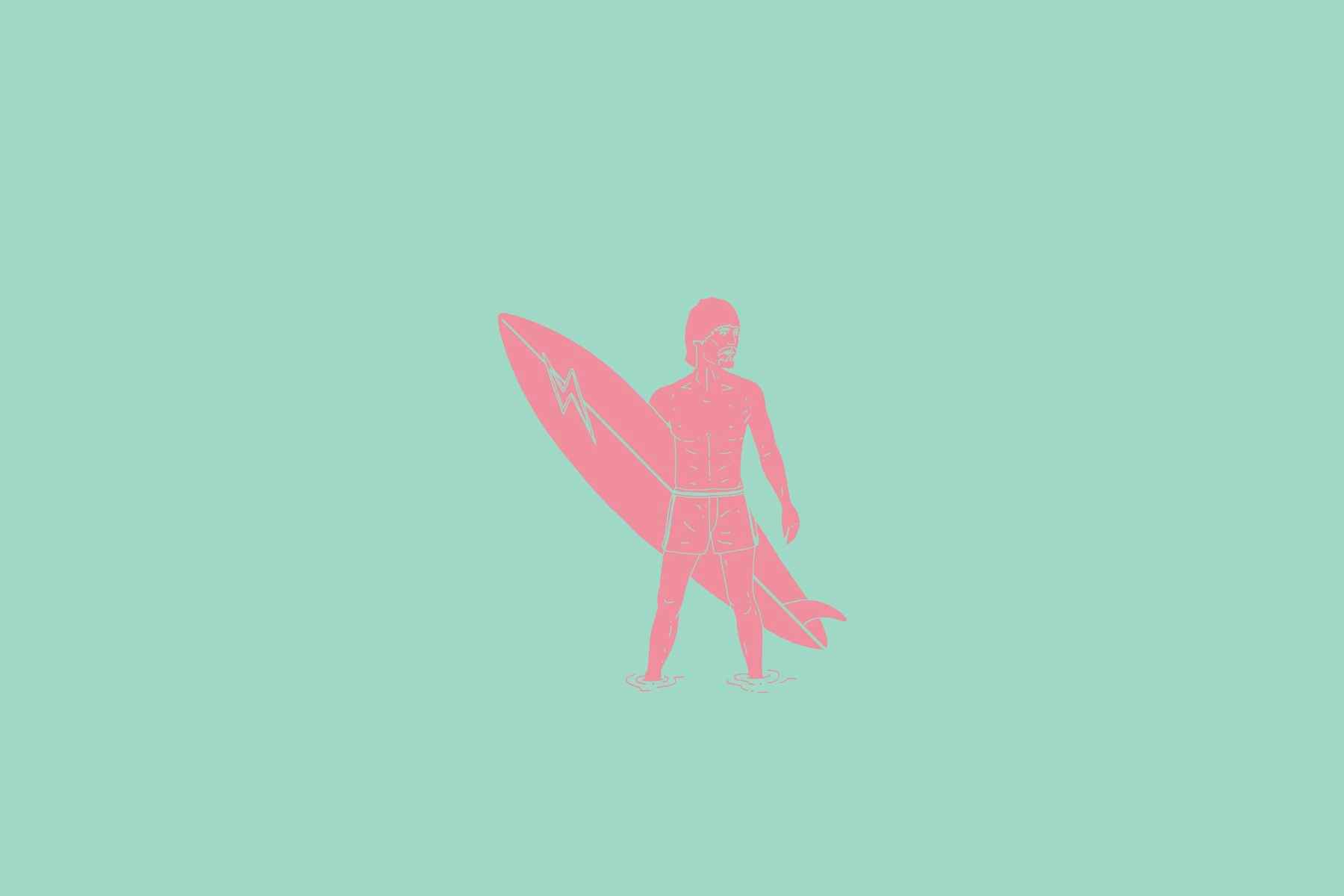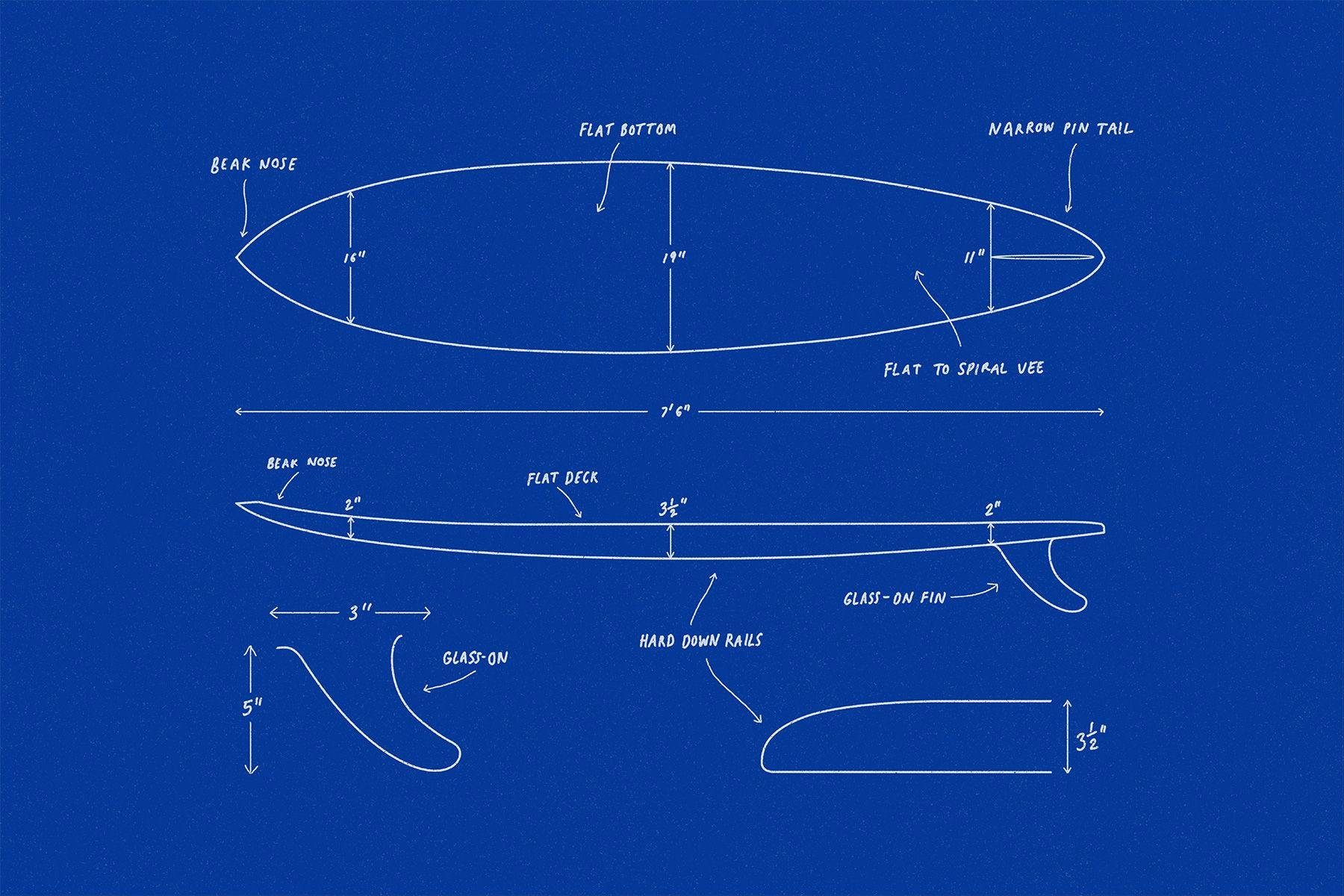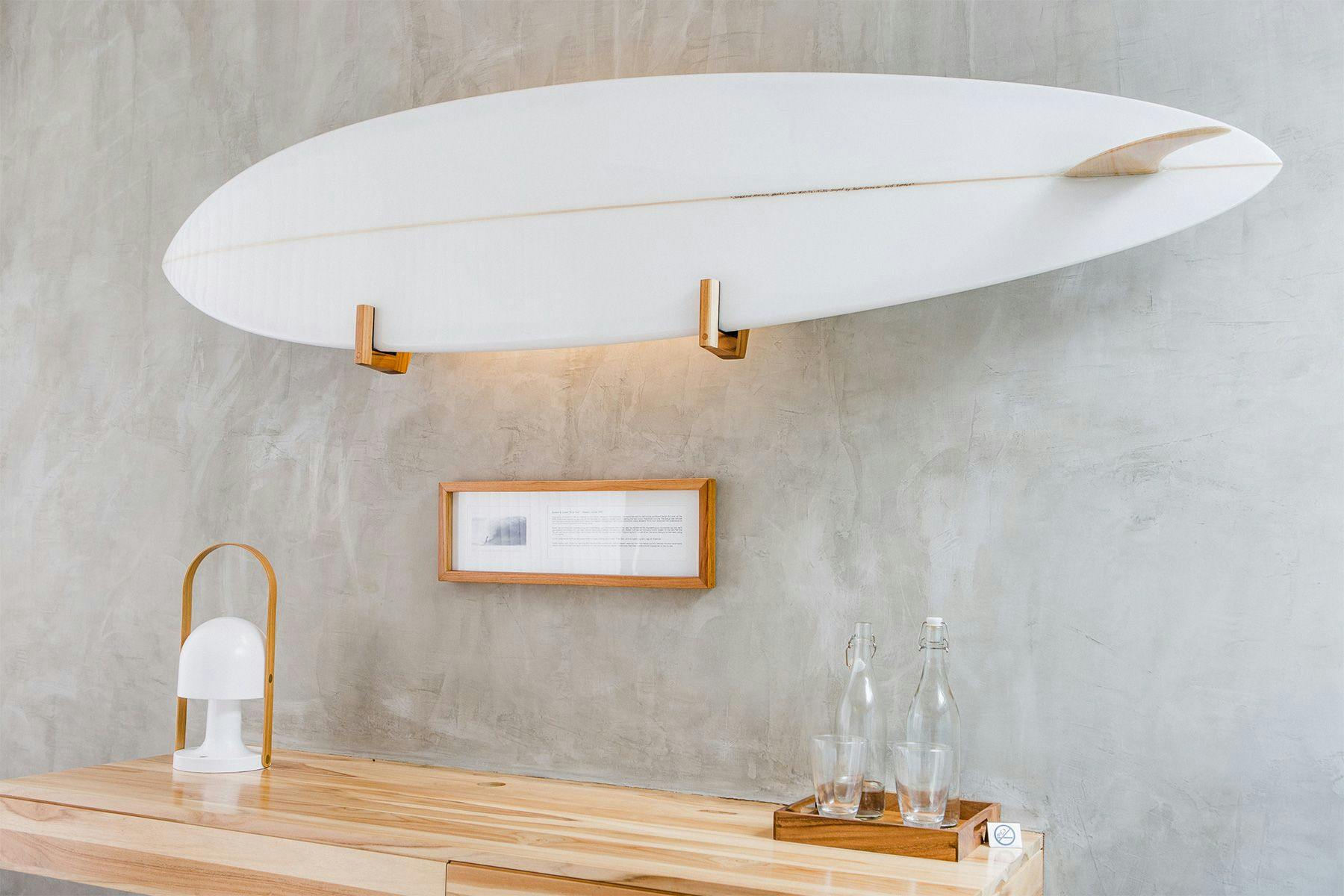SurfboardsThe History of Surfboard Design: Dick Brewer’s Mini Gun

As one of the first stepping stones into the renowned Shortboard Revolution, the mini-gun, designed by Dick Brewer in 1967, not only kick-started a radical wave of change design-wise but also shook the foundations of where surfers could go on waves and what it meant to be a surfer. As a result, it also impacted the surfboard industry, which had been monopolized by several big manufactures up until then. Brewer’s mini-guns were far removed from the ordinary aesthetics of surfboards of that era, veering away from the standard longboard design and applying features of early big wave guns to a much shorter template while also experimenting with aerodynamic and hydrodynamic principles. Hence, surfers began to see both the art of wave riding and their place within the growing surf industry differently.
The Historical Context
The early and mid 1960s were a period of consolidation for the surf industry – surfboard making included – which was industrialised in the previous decade as more and more people jumped on the bandwagon. Yet towards the end of the decade many surfers, seeking innovative ways to progress the art of wave-riding, realised that the only way to experiment in the water would be to experiment with surfboard design. This motivation sent many of them back to their own garages-turned-shaping-bays, consequently breaking off the momentum of big surfboard manufacturers (such as Hobie, Harbor, Bing and Yater) and their stock models and opening the gates to bolder and more innovative approaches to shaping and riding waves.
In Australia a collaboration between visionary American kneeboarder George Greenough, local Australian surfboard shaper Bob McTavish and surfer Nat Young experimented with the idea of making shorter surfboards in order to perform tighter turns in the more critical part of the wave. At the same time in Hawaii, Dick Brewer and his entourage of riders (which included Reno Abellira and Gerry Lopez) also began to shorten their designs to facilitate surfing the powerful, hollow waves of Oahu’s North Shore. The consequence of a subsequent meeting between McTavish and Brewer in 1967 set off a series of rapid innovations in surfboard design – most notably the decrease from the usual 10ft to an average of 7ft and variations in bottom contour and rail profile – that were to become regarded as the propellers of what is known as the Shortboard Revolution, and the birth of high-performance surfing.
Why Was This Development Necessary?
Despite the introduction of new materials during the previous decade and the motivation on the part of surfers to explore wave-riding techniques, up until the late 60s, surfboards were still long and heavy, with characteristics that limited performance and maneuverability in more challenging waves. Numbed by the linearity of the surfboard designs coming out of the big brand manufacturers and hungry to ride faster, turn sharper, and fit deeper into the pocket, a new wave of surfers-cum-shapers saw in the length and outline of the ordinary longboard the first obstacle to be overcome. Once the idea of making and riding shorter boards was tried and tested and began to settle, so began the experimentation with other elements such as bottom contours and rails, all with the intention to optimize the way waves were being ridden and what was possible. They were aiming for radical, both in and out of the water.

Who Was Involved?
Regarded as one of the best shapers of the era, Dick Brewer cemented his place in surf history by partaking in the opening move of the Shortboard Revolution with his innovative mini-gun design. Born in Minnesota but raised in Long Beach, California, Brewer made a living as a machinist in the 50s but began his shaping career soon after taking up surfing in 1953, moving to Oahu in 1960 to learn the ins-and-outs of the craft from shapers Bob Shepherd and Mike Diffenderfer. A big-wave enthusiast himself, Brewer developed a keen eye for shaping big-wave-guns. While working for Bing Surfboards in California – one of the many manufacturers he shaped for – in 1967 he crafted a series of longboards (namely the Pipeliner, the Pintail, and the Lightweight) that became hugely popular and were commercially very successful due to their refinement. Later that year Brewer was fired and moved to Maui to open the short-lived Lahaina Surf Designs (LSD) before going on to shape under the Dick Brewer label. Following an encounter with Bob McTavish and Nat Young, Brewer came to develop the first min-gun, made for and tested by Gary Chapman. Both Brewer’s talent as a shaper and larger than life (often abrasive and ego-centric) character made him a conspicuous figure in the history of surfboard design; his innovative approaches influencing surfers like Reno Abellira, Gerry Lopez, Jock Sutherland, Terry Fitzgerald, the brothers Chapman, to work closely together to push surfing forwards.
Design Details
At first glance, Brewer’s mini-guns stood out measurement-wise for being much shorter in length (average of 7ft) and lighter in weight (roughly 18 pounds) than what surfers were used to – both key features in improving a surfboard’s responsiveness, befitting them to North Shore waves. Aesthetically, the teardrop outline, with its beaked nose and narrow pointed tail, was inspired by its big wave predecessor the gun and deviated from the standard surfboard plan shape embodied even by its close Aussie sibling, the vee-bottom. This template increased the manoeuvrability of the board whilst maintaining directional stability; the narrow, straight railed tail allowed quick, but fine, rail to rail adjustments for navigating barrels without sliding out and allowed the surfer to fit into the pocket more easily. But it was in the fine, almost imperceptible details where Brewer’s design is so noteworthy.
The application of down rails – a rail profile with the apex of the curve below the mid-point rather than on the midpoint (50/50 rails) or above the midpoint – drastically reduced the drag compared to softer-railed surfboards and facilitated the higher speeds that surfers were searching for in order to successfully surf the fast, hollow waves of Oahu’s North Shore. Later, with the application of tucked-under rails (a further refinement where the down rail is tucked under the rail apex), Brewer merged the best of both [rail] worlds by adding the element of hold, control and stability from this softer and rounder rail onto the more slide-out-prone hard edges, tapping deeper into the board’s capacity to surf with control on hollow and steep walls.
Bottom-wise, the mini-gun also espoused a combination of flat and vee bottom contours, utilizing the made-for-speed features of the first with the control properties provided by a convex planning surface of the latter, which also benefited the rail-to-rail surfing associated with the down rails. As the horizon widened in terms of maneuverability, Brewer was prompted to experiment further with rocker, which led to variations such as the “Flip Tip” made for Reno Abellira in 1969 to follow.
With the mini-gun, the design of surfboards evolved from that of a vessel (rounded hulls with flat decks) to that of a water glider (domed decks and flat bottoms). Surfboards began to be categorised as “shortboards” or “longboards”. The progressive design features that Brewer combined in the mini-gun allowed surfers of that time to ride more challenging waves with more success, and because Hawaii was seen as such a proving ground and the team of surfers Brewer shaped for were so high profile the Brewer mini-gun became the archetype board of the 70’s, despite being very poorly suited to most (normal) waves. Individually however, these design principles would feed the next generation of what would soon be high-performance surfing.
Specifications
Avg Minimum Avg Maximum Length 6’4” 8”
Width
Nose 16’’ 16 1/2” Midpoint 19’’ 22” Tail 11” Thickness 3” 3 1/2” Weight 18lb
